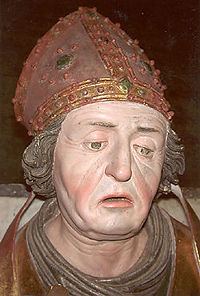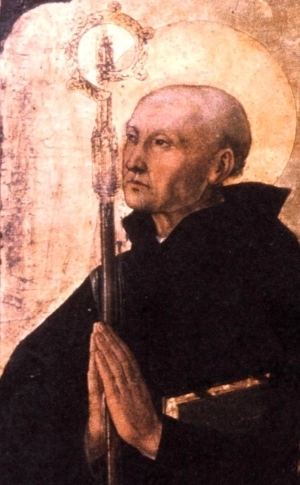Feast 8 January | Name Severinus Noricum | |
 | ||
Patronage Noricum, San Severo, Striano | ||
St. Severinus of Noricum | | 8th January | Atmadarshan Tv
Severinus of Noricum (c. 410 – 8 January 482) is a saint, known as the "Apostle to Noricum". It has been speculated that he was born in either Southern Italy or in the Roman province of Africa. Severinus himself refused to discuss his personal history before his appearance along the Danube in Noricum, after the death of Attila in 453. However, he did mention experiences with eastern desert monasticism, and his vita draws connections between Severinus and Saint Anthony of Egypt.
Contents

Saint Severinus of Noricum is not to be confused with Severinus of Septempeda, the brother of Saint Victorinus of Camerino, and a bishop of Naples, whose feast day is celebrated on the same day, 8 January.
Life
The mysterious high-born Severinus is first recorded as travelling along the Danube in Noricum and Bavaria, preaching Christianity, procuring supplies for the starving, redeeming captives and establishing monasteries at Passau and Favianae, and hospices in the chaotic territories that were ravaged by the Great Migrations, sleeping on sackcloth and fasting severely. His efforts seem to have won him wide respect, including that of the Germanic chieftain Odoacer. Eugippius credits him with the prediction that Odoacer would become king of Rome. However, Severinus warned that Odoacer would rule not more than fourteen years.
Severinus also supposedly prophesied the destruction of Asturis (perhaps Klosterneuburg), Austria, by the Huns under Attila. He established refugee centers for people displaced by the invasion, and founded monasteries to re-establish spirituality and preserve learning in the stricken region.
He died in his monastic cell at Favianae while singing Psalm 150. Six years after his death, his monks were driven from their abbey, and his body was taken to Italy, where it was at first kept in the Castel dell'Ovo, Naples, then eventually interred at the Benedictine monastery rededicated to him, the Abbey of San Severino near Naples.
Severinus was the childhood guardian and spiritual father of St. Anthony the Hermit.
Accounts of his life
Paul the Deacon, in his 8th-century History of the Lombards, mentions the monastery founded by Severinus at Eiferingen, at the foot of the Kahlenberg, not far from Vienna:
In these territories of the Noricans at that time was the monastery of the blessed Severinus, who, endowed with the sanctity of every abstinence, was already renowned for his many virtues, and though he dwelt in these places up to the end of his life: now however, Neapolis keeps his remains.
The Vita of Severinus was written by Eugippius. Beyond Eugippius' work, the only other contemporary source that mentions Saint Severinus is the Vita beati Antonii by Magnus Felix Ennodius, bishop of Pavia.
In the History of the Decline and Fall of the Roman Empire, Edward Gibbon notes that the disciples of Saint Severinus were invited by a "Neapolitan lady" to bring his body to the villa in 488, "in the place of Augustulus, who was probably no more." The villa was converted into a monastery before 500 to hold the saint's remains.
Martin Luther made reference to St. Severinus in point 29 of his famous Ninety-Five Theses suggesting that it is unclear whether all of the souls in purgatory desire to be brought out from it.
